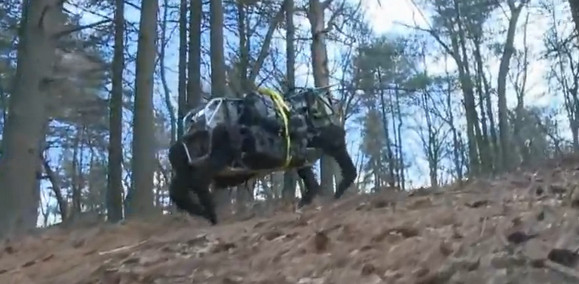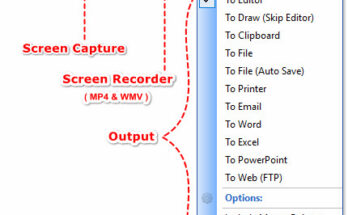
It’s been scaring the Beejezus out us for some time now, but Boston Dynamics’ scary, scuttling robodog has now been spotted shuffling about in the wild, in preparation for military duties.
The Boston Dynamics’ LS3 – to give it its full name – is being billed as a robotic “pack mule” for the battlefield, with the four legged creation always ready to stand up, lie down and charge about with 400 lbs. of army gear on its back.
The robodog comes with onboard sensors to recognise obstacles in its environment and plot a path around them, and can climb and descend a hill and use its skills for autonomous follow-the-leader capabilities.
It’s still a noisy beast, so there’s no chance of it being used to creep up on the enemy, although the sight of this thing coming towards you may send some soldiers fleeing.
Check out the video below and scroll down for the full press release. And just hope it doesn’t start appearing in your nightmares.
DARPA’S LEGGED SQUAD SUPPORT SYSTEM (LS3) TO LIGHTEN TROOPS’ LOAD
February 07, 2012
Prototype robotic “pack mule” stands up, lies down and follows leader carrying 400 lbs. of squad’s gear
Today’s dismounted warfighter can be saddled with more than 100 pounds of gear, resulting in physical strain, fatigue and degraded performance. Reducing the load on dismounted warfighters has become a major point of emphasis for defense research and development, because the increasing weight of individual equipment has a negative impact on warfighter readiness.
The Army has identified physical overburden as one of its top five science and technology challenges. To help alleviate physical weight on troops, DARPA is developing a highly mobile, semi-autonomous legged robot, the Legged Squad Support System (LS3), to integrate with a squad of Marines or Soldiers.
Recently the LS3 prototype underwent its first outdoor exercise, demonstrating the ability to follow a person using its “eyes”-sensors that allow the robot to distinguish between trees, rocks, terrain obstacles and people. Over the course of the next 18 months, DARPA plans to complete development of and refine key capabilities to ensure LS3 is able to support dismounted squads of warfighters.
Features to be tested and validated include the ability to carry 400lbs on a 20-mile trek in 24-hours without being refueled, and refinement of LS3’s vision sensors to track a specific individual or object, observe obstacles in its path and to autonomously make course corrections as needed.
Also planned is the addition of “hearing” technology, enabling squad members to speak commands to LS3 such as “stop,” “sit” or “come here.” The robot also serves as a mobile auxiliary power source- troops may recharge batteries for radios and handheld devices while on patrol.
DARPA seeks to demonstrate that an LS3 can carry a considerable load from dismounted squad members, follow them through rugged terrain and interact with them in a natural way, similar to the way a trained animal and its handler interact.
“If successful, this could provide real value to a squad while addressing the military’s concern for unburdening troops,” said Army Lt. Col. Joe Hitt, DARPA program manager. “LS3 seeks to have the responsiveness of a trained animal and the carrying capacity of a mule.”
The 18-month platform-refinement test cycle, with Marine and Army involvement, kicks off this summer. The tests culminate in a planned capstone exercise where LS3 will embed with Marines conducting field exercises.
[Via]


